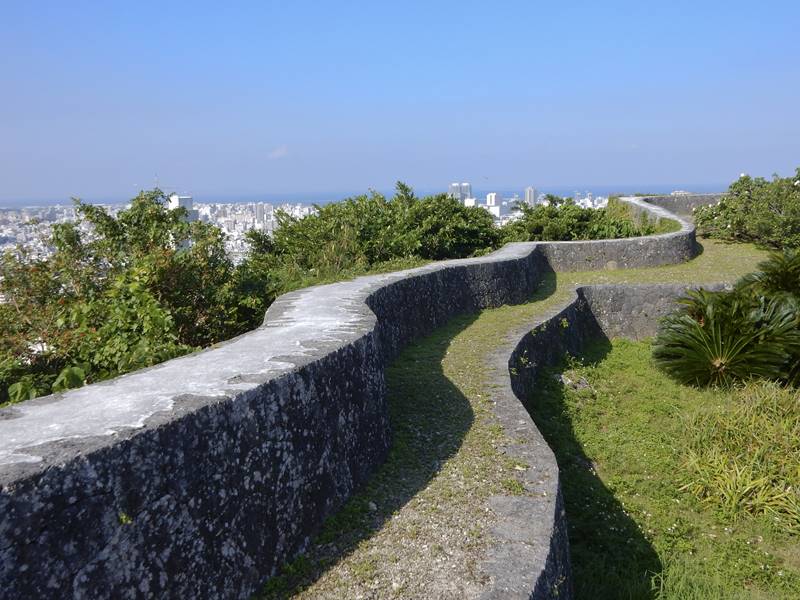This is all about Shuri Castle you want to know.
Every information you get on this site will be from a credible source based on Japanese history (books for reference).

Okinawa, home to Shuri Castle, consists of more than 150 islands in the East China Sea, between Taiwan and Honshyū. Known for its tropical climate, vast beaches and coral reefs, and World War II sites. There is "Okinawa Prefectural Peace Memorial Museum", built to pass on the massive 1945 invasion of the Allied Forces to future generations, and "Okinawa Churaumi Aquarium" with whale sharks and manta rays in Okinawa's largest island.

Symbol of Ryūkyū country and royal family. The first floor is where the king holds politics and ceremonies, and the second floor is where the king and his relatives and women perform ceremonies.

A fire broke out in the early morning of October 31, 2019, and the Main, North and South shrines were all burned down. In addition, a total of 7 buildings and a total of 4,800㎡ have been turned into ash. Looking back at history, it has been burned down for the fifth time after 1453, 1660, 1709 and 1945.

【below】October 2012 (from Nikkei)
Profile : Shuri Castle Ruins
| Location | Naha City, Okinawa Prefecture |
| Also known as | ー |
| Type of castle | Hilltop |
| Mountain's name | ー |
| Elevation | 120m |
| Condition | No main keep but other buildings |
| Designation | World Heritage ( the Kingdom of Ryūkyū ) National Historic Sites |
| Year built | about the end of 14th century |
| Abolished | 1879 |
| Castle lord | Unknown |
| Refurbishment lord | King Shōhashi |


Shuri Castle admission
admission fee : free ※Shuri Castle Park
admission time :
(Aprli 1- Jun 30) : am8-pm7:30
(July 1- September 30) : am8-pm8:30
(Otober 1- November 30) : am8-pm7:30
(December 1- March 31) : am8-pm6:30
closing period : during First Wednesday of July and the following day reference official site
Shuri Castle Google Map
Shuri Castle Images


Shurei, which is the name of the gate, means "to protect the etiquette," and the big frame on the gate reads "Shureinokuni." It means "Ryūkyū is a respectful country".

Kankaimon Gate is the main gate, and Kyūkeimon Gate is the side gate. Both are arch gates with a Yagura on top. The wall had an elegant curve, but there was a warrior run, and the enemy could be attacked with arrows and guns. The inside of the castle is shaped like a masu, and the consciousness for defense is high.

The stone walls are stacked vertically without any gaps, creating a smooth curve.

This is because the Ryūkyū limestone based on coral and other dead bodies that are used is easy to process, so this type of loading is possible. One of the major features that can be said of the entire stone wall of Shuri Castle is that the corners are rounded like protrusions and face upward. It is theorized that bad luck tends to collect on the corners, so the corners are eliminated and the ventilation is improved.



The spring water "Ryu-Hi" is located on the lower right of the stone steps, so it was named Zuisen(means a spring) Gate.
At Roukokumon gate, it is said that a water tank was installed on Yagura above the gate, and time was measured by the amount of water leaking.

This sculpture is the only thing that came from China about 500 years ago and is invaluable.


"Keisei" means passing on to the next generation. When the king died, a successor son entered the castle through this gate and performed the ceremony of succession to the throne. This gate is located on the east side of the castle and in a sense is the back gate.


The castle wall of Shuri Castle is a gentle curve utilizing the natural terrain and it is a beautiful curve, but if you look closely you can see that the dragon, which is a symbol of the king, is moving, It is very interesting.




It is a sacred and high-class facility that performs rituals in the religion of the Ryūkyū's.

It is a sundial that is said to measure time at noon and before and after. The clock is a stone disk with the zodiac carved on it, and the clock is attached with rods made of copper. It is presumed that the time was measured by the shadow of the stick.

A famous bronze bell associated with the Ryūkyū Kingdom.

Gate to the "Unā" (special garden) with the main shrine.

Stairs leading from the second floor to the first floor. Using these stairs, the king descended to the first floor.

You can see the atmosphere where Okinawa is a southern country.

If you live in a place where do not have a sea, or if you are traveling and want to enjoy the beautiful sea, we strongly recommend the mainland Okinawa and the islands in this region. Because it's too attractive.
Link : World Heritage Sites
【west japan】Nijō Castle 【south japan】Nakijin Castle 【south japan】Nakagusuku Castle 【south japan】Shuri Castle
